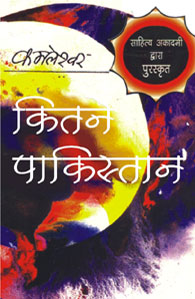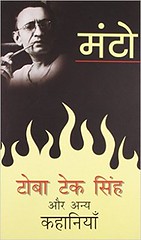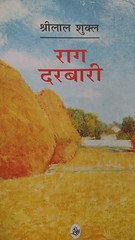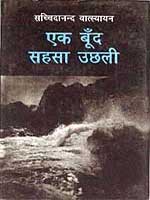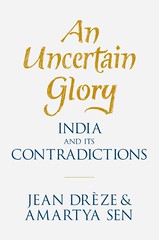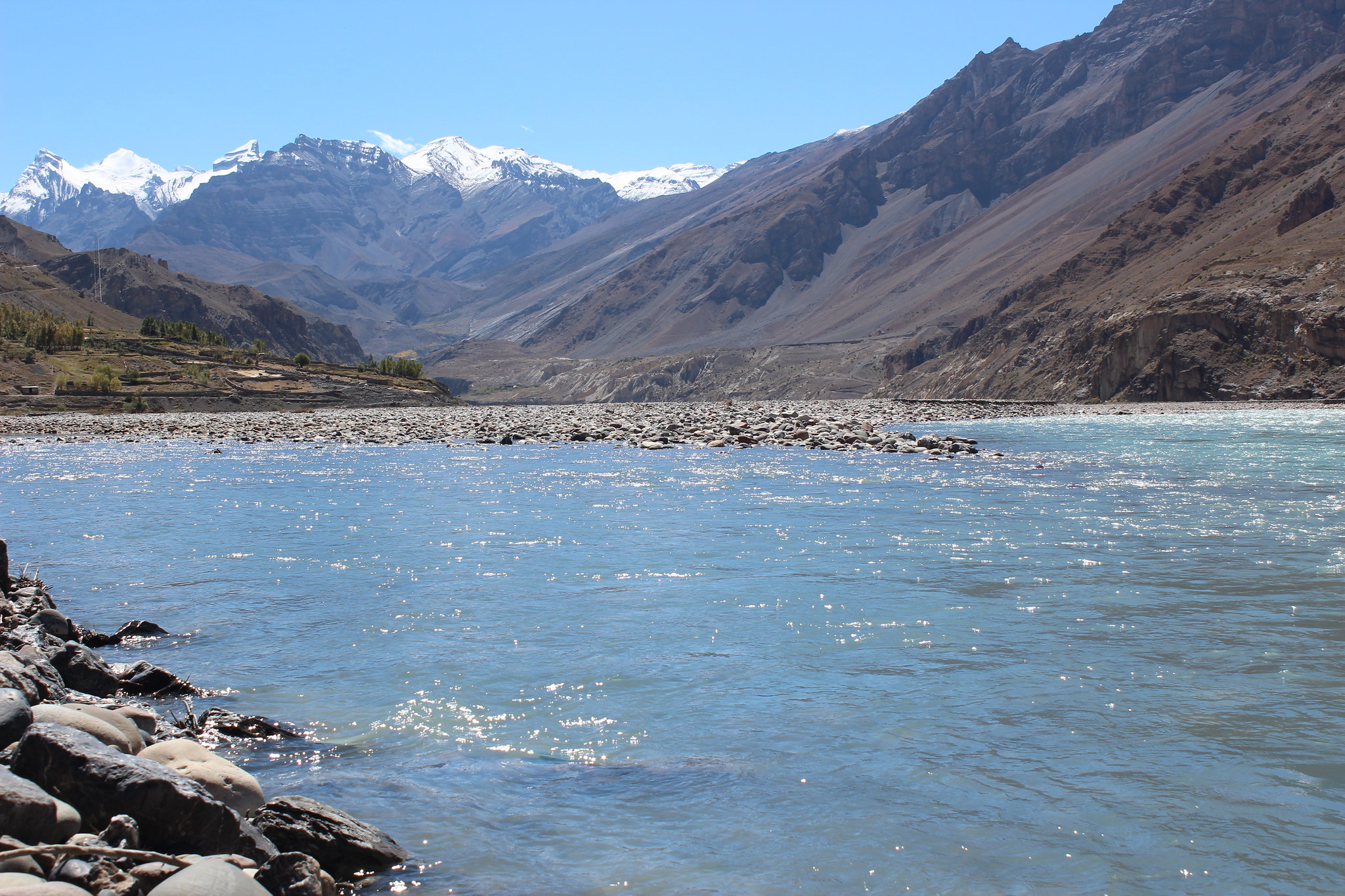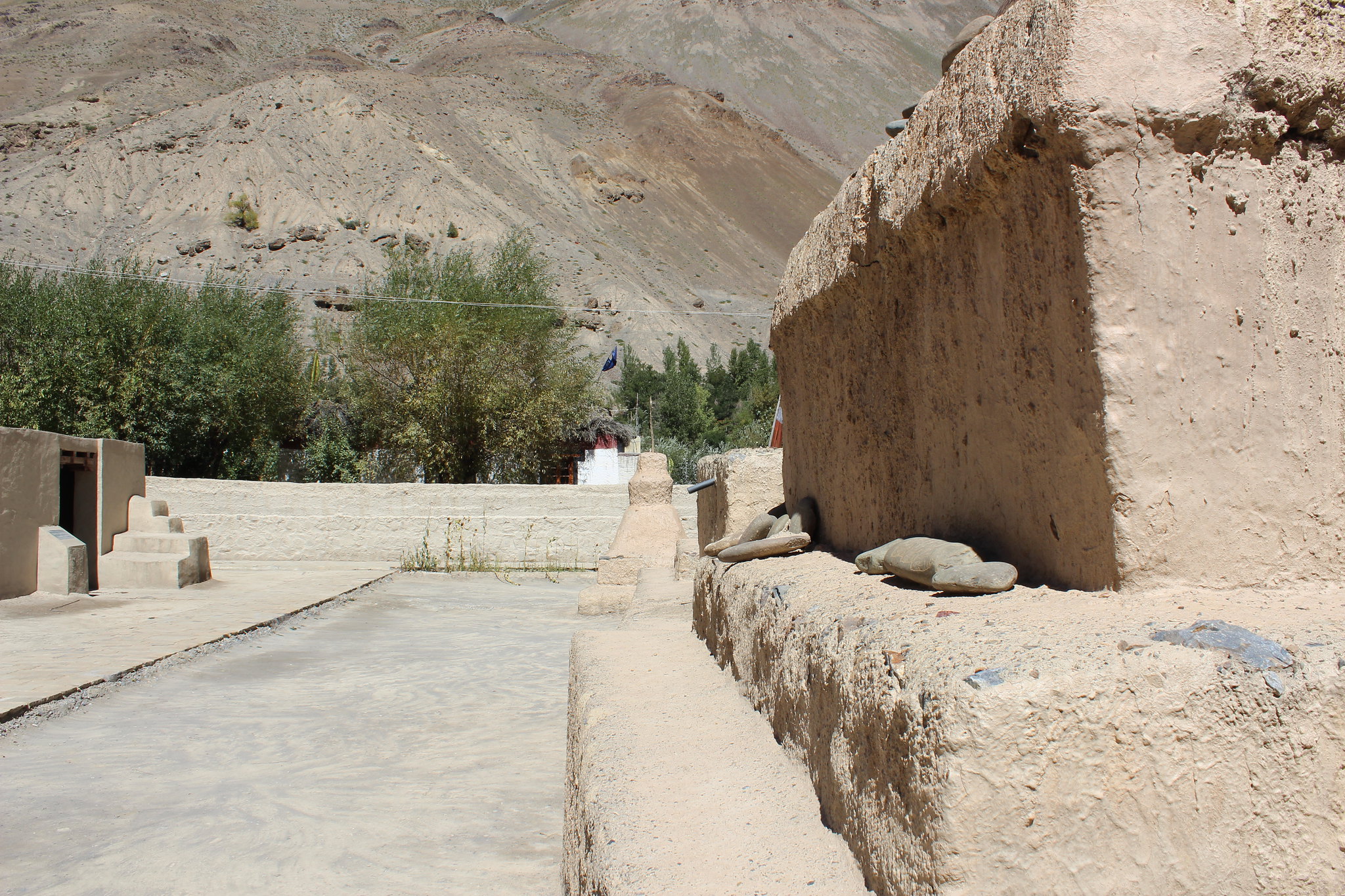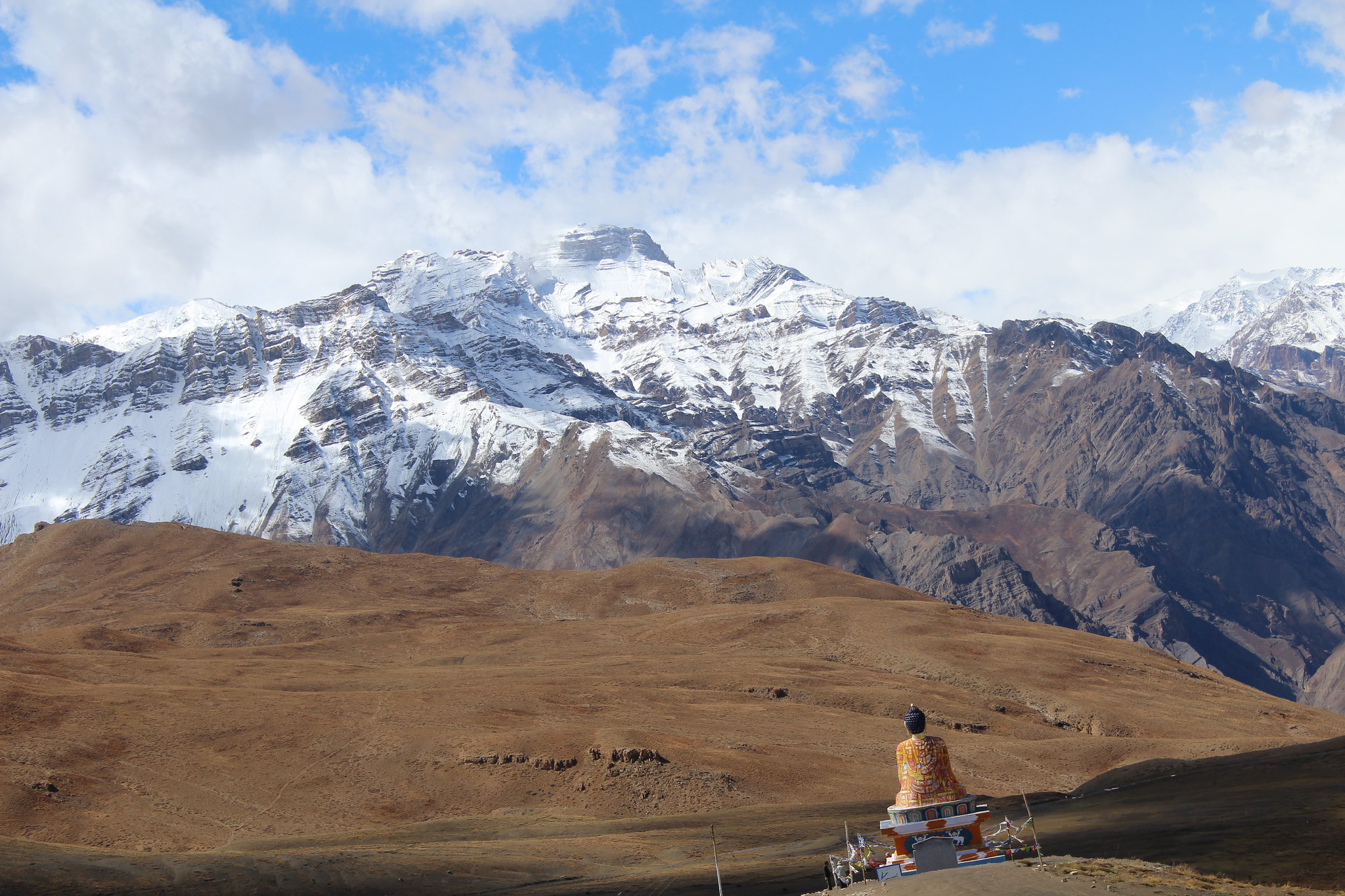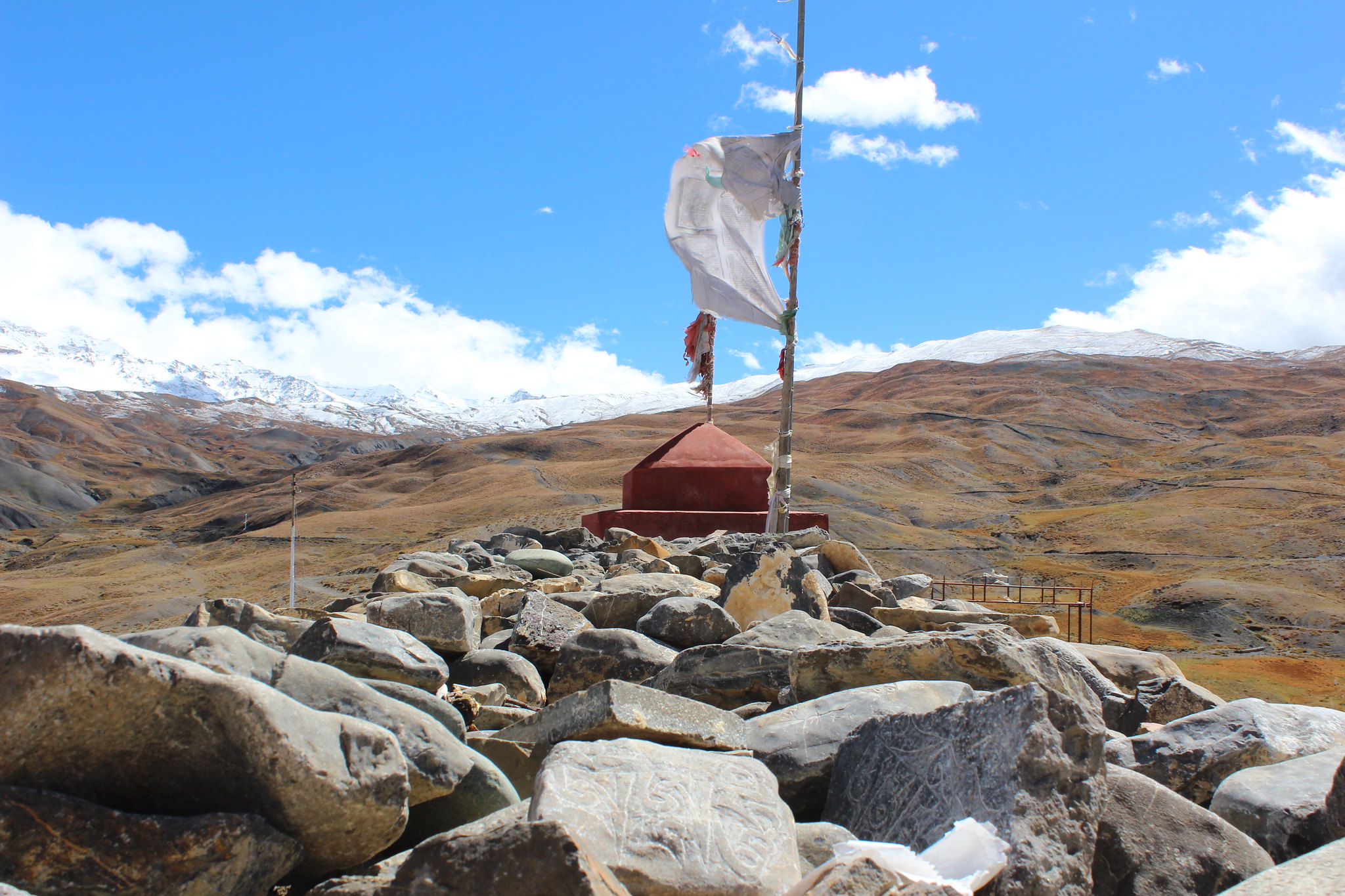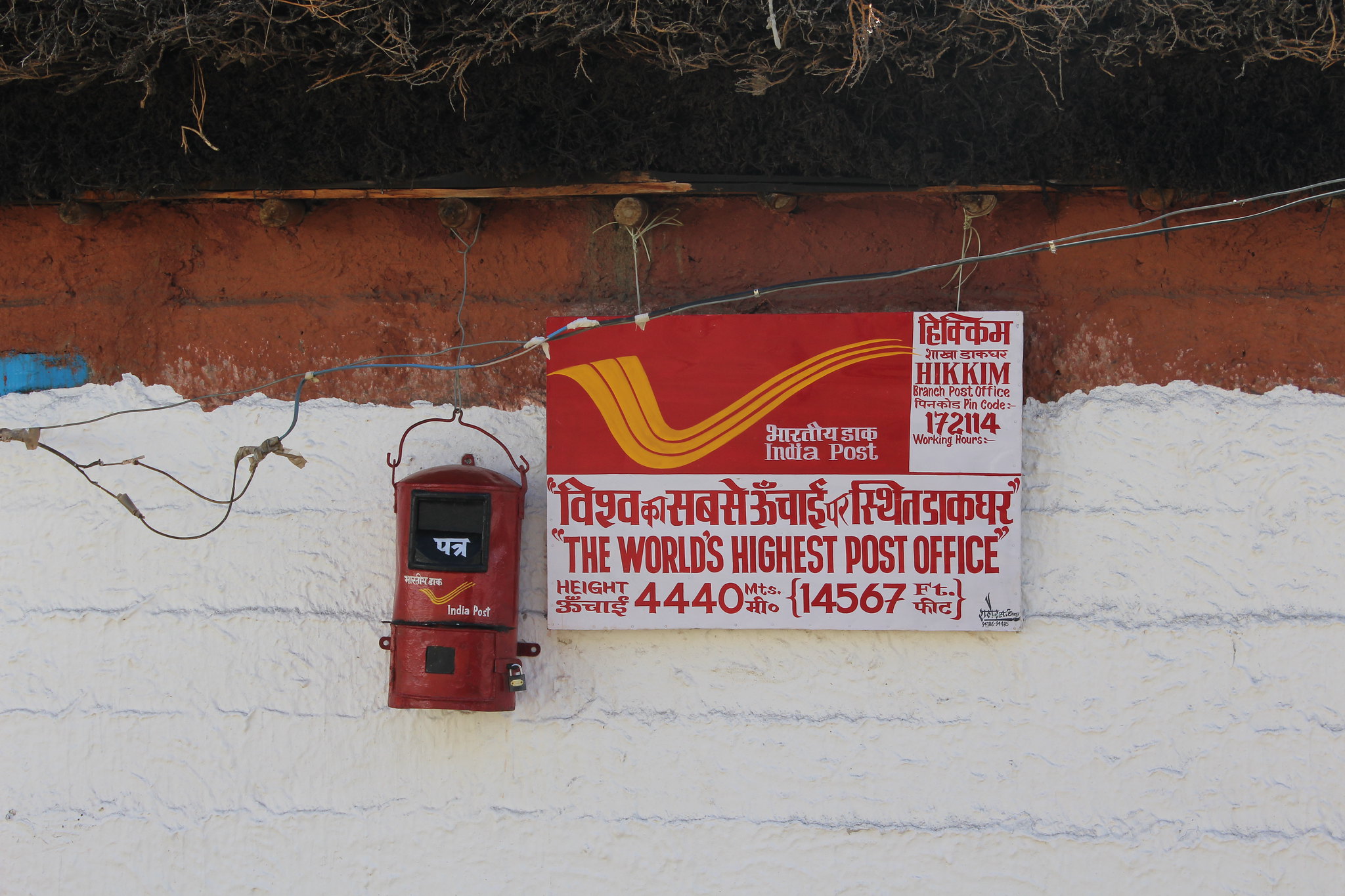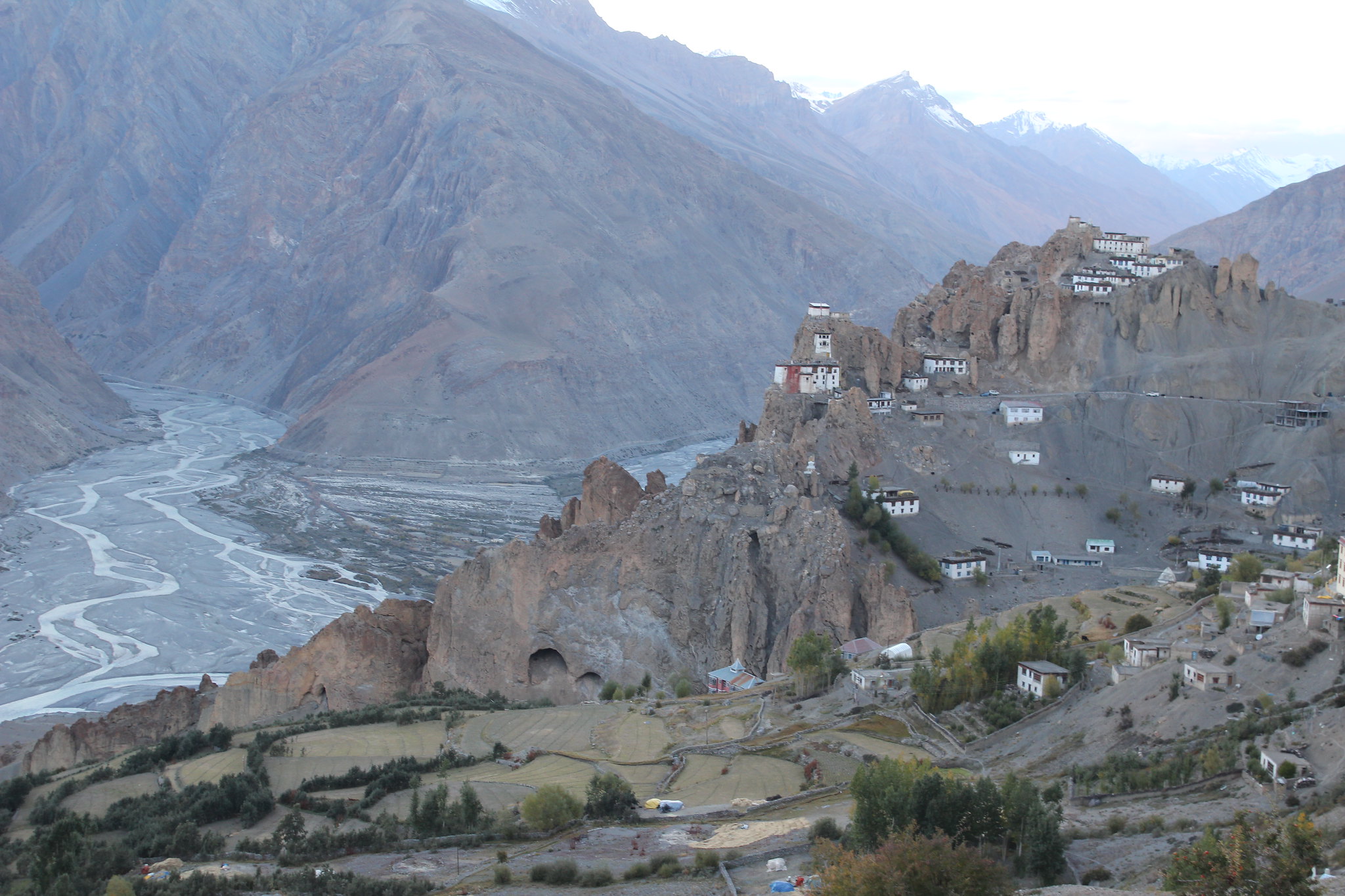 |
| Dhankar Monastery and the confluence of Spiti and Pin rivers |
In the local language of Spiti Valley, Gompa means a monastery. Dhankar Gompa is also an old monastery like others in the region. Belonging to Gelugpa sect, it probably dates back to 12th century. 25 kilometers from Kaza, towards the road to Tabo, there was a diversion for Dhankar Gompa. It was situated on a cliff overlooking the confluence of the Spiti and Pin rivers. Few hundred meters below the Gompa, there was Dhankar village. In the Dhankar village, there was the same pattern of white houses with step farms in between. In the local language, Dhankar means a fort on a cliff. Near Dhankar Gompa, there were other structures too like a fort. Do not compare it with the usual forts that you have seen. Built on the cliffs with a small area at the top, forts in the Spiti Valley are bound to be small. It would have been very difficult to transport materials for building a big fort at such height and so far-removed from traditional population centers. Also, the number of persons that these forts had to host was small. Once upon a time, the Spiti kingdom was ruled from Dhankar. Inside the Gompa, near the entrance, there was a chamber of protecting deity. Supported on the pillars from inside, Dhankar Gompa also houses a small museum.
There is a lake near Dhankar village. It is a high-altitude lake named after the village. The way to Dhankar lake starts near the guest house. We decided to trek. The trek was, by no means, easy. Although, it was not too long and was not too steep, but at the heights above 4000 meters ,if one has not become used to thin air, then such treks are difficult. The water of the lake was very clear - so clear that you can see the reflection of hills on the opposite side. Half of the lake was shadowed by the hills and that shadow was increasing. Sunset was approaching. There was a small Pagoda-like structure near the lake and the beautiful colorful prayer flags around that. The pattern of thorny bushes near the lake was interesting. If you would see the barren land you would say no vegetation is possible here but then you would see these bushes artistically sprinkled here and there.
Returning from the lake, the lunar-shaped village of Dhankar and the Gompa were seen in the background of the confluence of Spiti and Pin rivers. This scene was the nature’s imagination at its best. It looked like the picture coming straight from the artist's canvas. In the valley below two rivers met and decided to continue their journey together peacefully forever. In the valley above, men met the religion in search of the peace. Men came to the abode of enlightened Lamas to be guided in their spiritual journey and the fire of knowledge was kindled in their souls. Men came to the Gompa, dwarfed by the high mountains and unable to move out for months in snowy winter. Men climbed the cliff to recite a verse in the worship of Avalokiteśvara. When men met religion in its true sense, it was like men met nature. The peace was established in these unapproachable mountains. That peace and tranquility are what attract the travelers today.
There is this thing about sunrise and sunset in the Himalayas. Because of high mountains on both sides of the valley, it is very difficult to see the sun rising. When you can actually see the sun, till then it is already a bright day. So a sunrise does not have the feeling of light fighting the darkness or slow spread of the light in all directions. I remember being awake in Rishikesh, Uttarakhand once to see the sunrise but when we had the first glimpse of sun, the day had already begun. The beautiful thing about sunrise in the Himalayas is the reflection of sunlight on snow-clad mountains which is reddish in color. This we had witnessed in Kaza and a few years back in Ukhimath, Uttarakhand. Like the sunrise, sunset also is different from the sunset that one is used to seeing. The sun hides behind mountains well before the first shadow of darkness creeps in. By the time we reached Dhankar Lake, a portion was covered by the shadow of mountains. This shadow only became larger. One starts to feel the chill. After sunset, the strong and cold winds take over.
While going to Tabo from Dhankar Village we saw few flex boards outside the fences surrounding trees. Seeing such tall trees was a surprise in itself. The location of Spiti Valley is such that the Monsoonal clouds do not cause rain here. The Harsh climate and small population mean a large area remains without any vegetation cover. Throughout our journey in the Spiti Valley, we did not see any place where you see grasses, bushes, or trees as you normally see elsewhere in the Himalayas. Those flex boards had details about the Desert Development Schemes of the government. Later when I searched about this, I got to know that governments are spending crores of rupees for this scheme. It creates a green cover and provides employment to the local people.
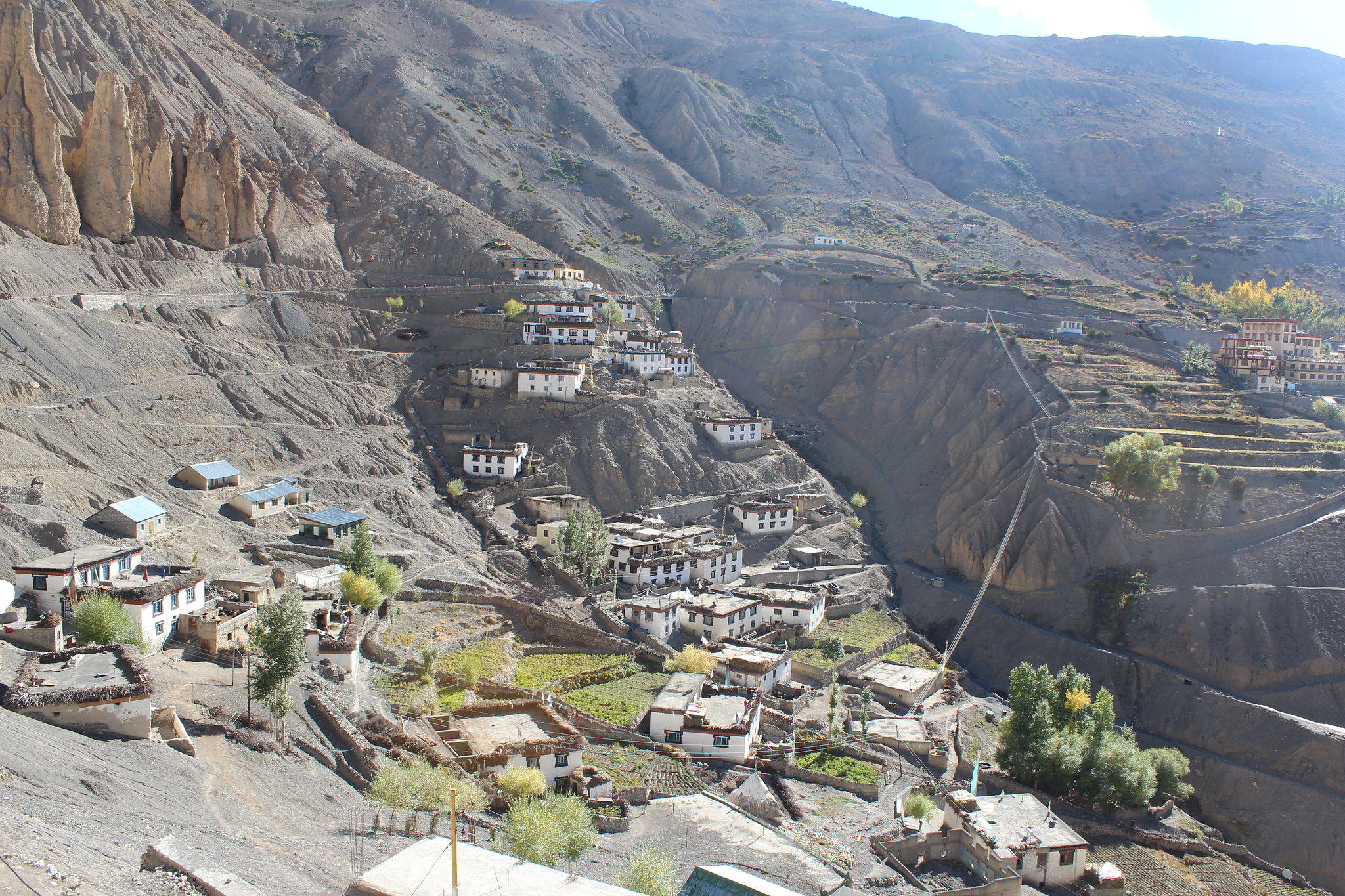 |
| Dhankar Village |
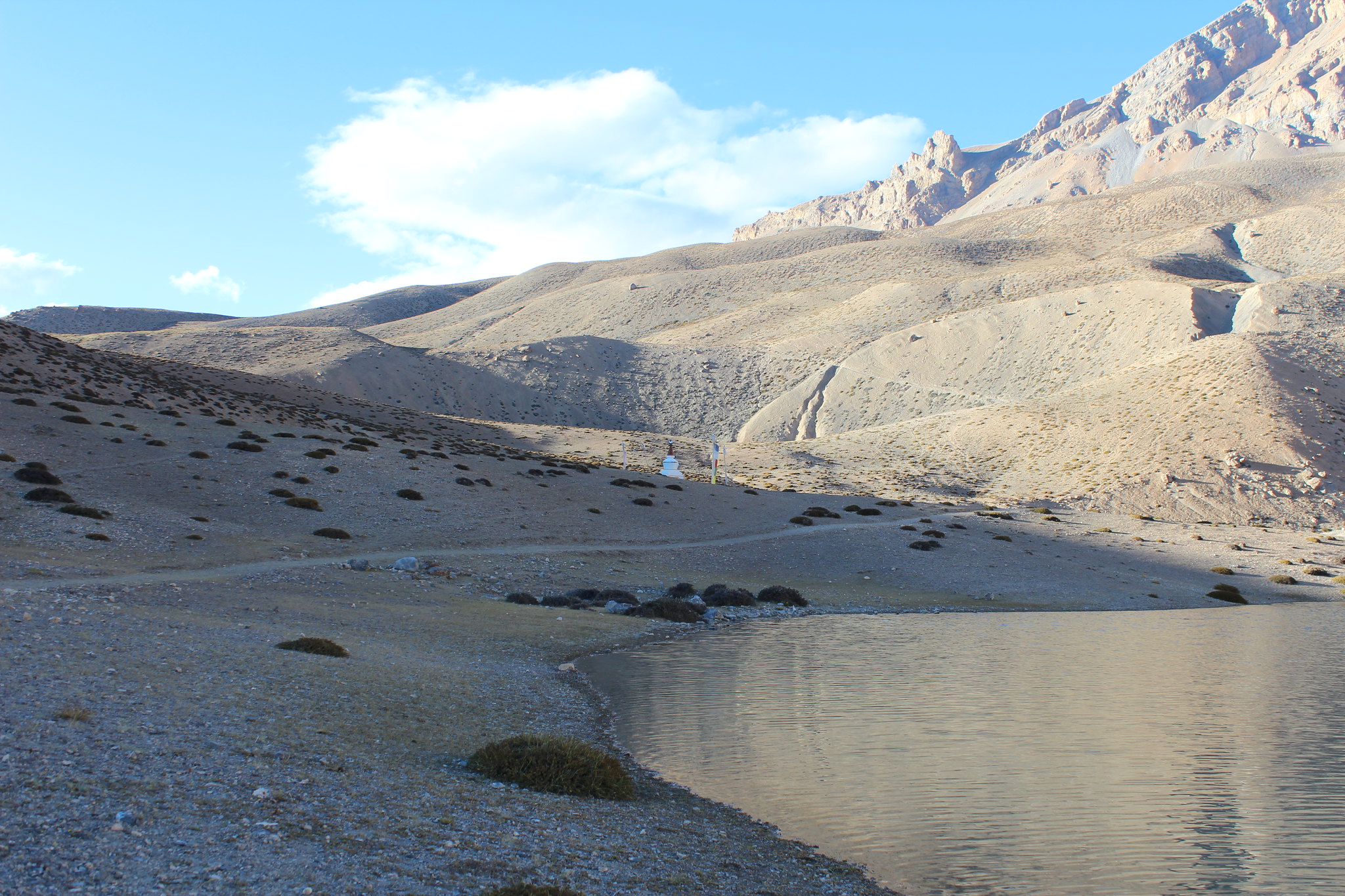 |
| Dhankar lake |
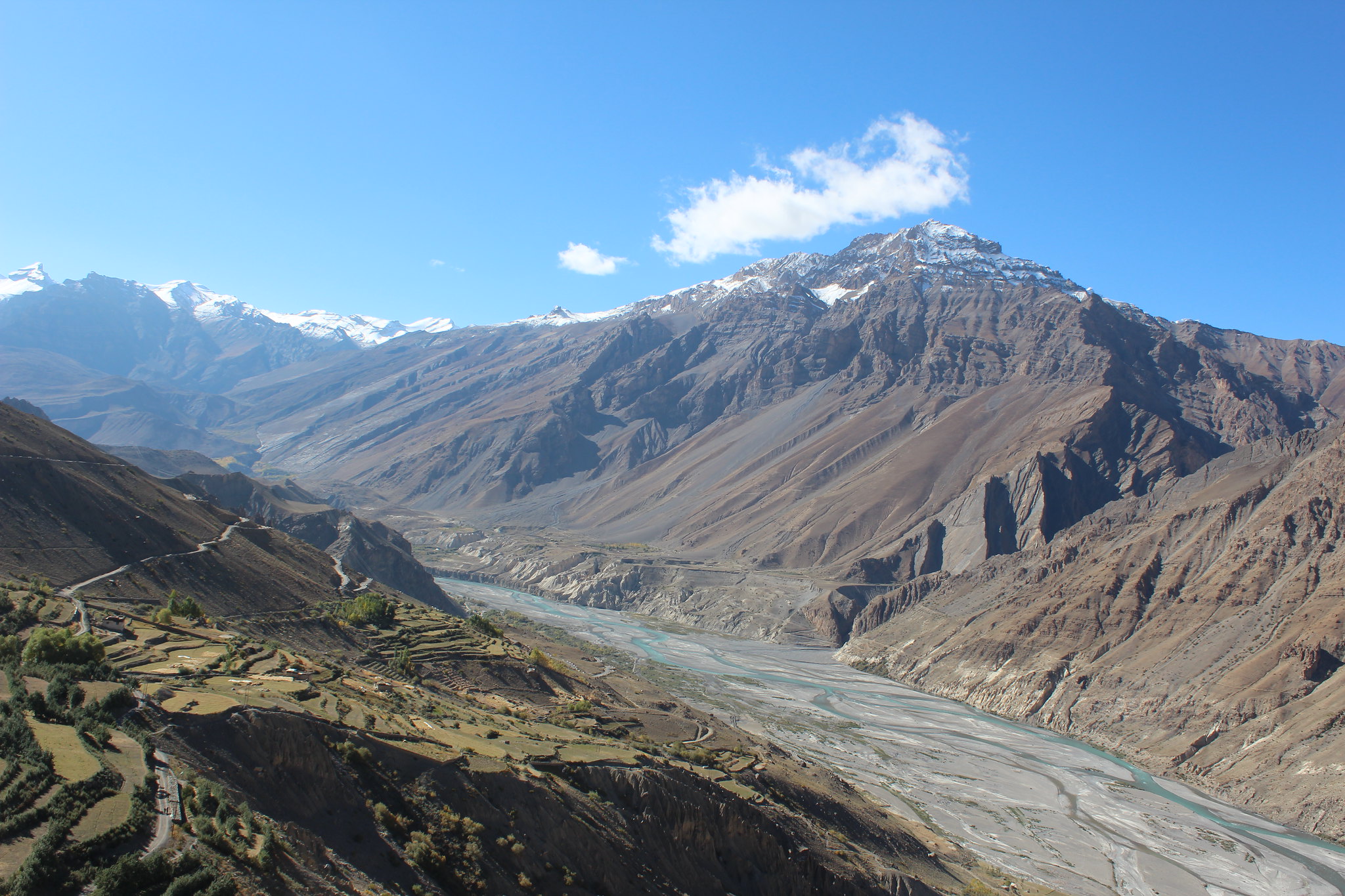 |
| Spiti river from Dhankar Monastery |

